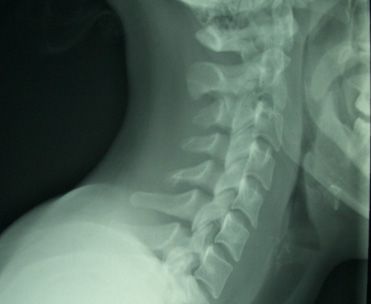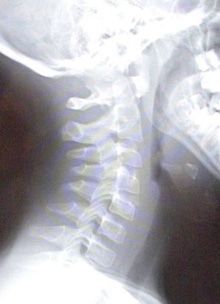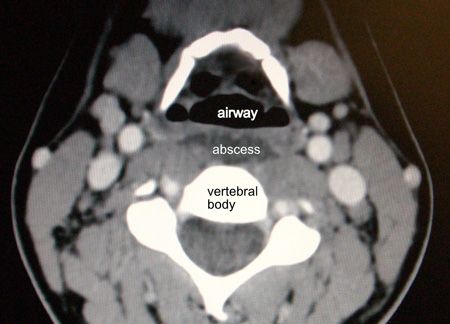- Clinical Technology
- Adult Immunization
- Hepatology
- Pediatric Immunization
- Screening
- Psychiatry
- Allergy
- Women's Health
- Cardiology
- Pediatrics
- Dermatology
- Endocrinology
- Pain Management
- Gastroenterology
- Infectious Disease
- Obesity Medicine
- Rheumatology
- Nephrology
- Neurology
- Pulmonology
Young Woman With Meningeal Signs
A woman in her 20’s presents for care after 9 days of sore throat and subjective fevers followed by neck stiffness that developed over the last 2 to 3 days. The pain is exacerbated by swallowing and any neck motion. She has had sore throats before, but never this bad or this long and never that made her neck stiff.

Figure 1
A woman in her 20s presents for care after 9 days of sore throat and subjective fevers followed by neck stiffness that developed over the past 2 to 3 days. The pain is exacerbated by swallowing and any neck motion. She has had sore throats before, but never this bad or this long-and never that made her neck stiff. Ibuprofen has not afforded much symptom relief.
The patient denies cough but does have a slightly runny nose. She has had no vomiting or photophobia. She is otherwise healthy with no previous medical problems, surgeries, or hospitalizations. She takes an oral contraceptive but takes no other prescription medications and has never been pregnant. She has a new boyfriend whom she has been dating for about a month.
The patient’s vital signs are normal, but she has a low-grade fever (temperature, 99.7°F). Eye findings are normal. Her oropharynx appears remarkably normal, and there is no drooling, stridor, trismus, or abnormal voice. She does, however, have a stiff neck with symmetric limited range of motion in all planes and in all directions. Plain films of the neck are done (Figure 1).
What is the differential diagnosis of meningismus-and do any of these conditions typically show up on plain radiography? What-if anything-does this x-ray film show that is abnormal?
Please click here for the answer and discussion.
Diagnosis: Retropharyngeal Abscess
Meningeal signs can be caused by a variety of conditions other than meningitis. Chronic conditions include degenerative arthritis, ankylosing spondylitis, and muscle contractions in bedridden patients. Infectious causes include spinal epidural abscess, retropharyngeal abscess, and tetanus. Muscular conditions that may cause a stiff neck include torticollis, dystonic reactions, and muscle spasm following injury.
Radiographs of this patient demonstrate widening of the prevertebral soft tissues: this finding is consistent with a retropharyngeal abscess (see Figure 1). Although at first glance the soft tissues may appear normal, there should actually be a step-off around C3-C4, which is not noted in this film. Normal prevertebral soft tissues should measure less than 6 mm at C2 and less than 22 mm at C6. A normal x-ray film is provided for comparison (Figure 2).


Figure 1 shows widening of the prevertebral soft tissues, a finding consistent with a
retropharyngeal abscess.
Normal prevertebral soft tissues should measure less than 6 mm at C2 and less than 22 mm at C6, as shown in Figure 2.
A CT scan of the neck (Figure 3) confirmed the diagnosis and helped determine whether surgery would be needed.
Retropharyngeal abscess is classically thought to be a disease of childhood, but has been increasingly recognized in adults as well. The clinical presentation usually starts with fever and sore throat, which may progress to trouble swallowing, dehydration, and neck stiffness. Stridor, drooling, and sepsis signify severe disease. The disease may stem from local infection that then drains to the retropharyngeal nodes, which then become suppurative. Risk factors include trauma, such as a recent foreign-body ingestion or medical procedure.

Figure 3
Diagnosis. A lateral neck x-ray film is 85% to 90% sensitive for retropharyngeal abscess. CT scanning is more sensitive, especially in children, where x-ray films can be falsely positive, and can help determine whether surgery is necessary and, if so, by what approach. CT does, however, expose the patient to high radiation dosage and may be avoided in milder cases that respond clinically to medical therapy, especially in younger patients in whom risks of radiation are higher. In this patient, CT images note the dark fluid collection anterior to the vertebral body.
Treatment. Management of retropharyngeal abscess includes airway stabilization (when necessary) followed by IV fluids and antibiotics to cover gram-positive, gram-negative, and anaerobic organisms, as well as admission to the hospital. Formal drainage in the operating room may be required and an ENT specialist should be consulted early on. Drainage in the emergency department may increase the risk for aspiration and should not be attempted. Complications of retropharyngeal abscess carry a high mortality and include airway obstruction, mediastinitis, aspiration pneumonia, epidural abscess, jugular venous thrombosis, and erosion into the carotid artery.
Outcome of this case: This patient did well with hospital admission and IV antibiotics. Surgery was not required.
